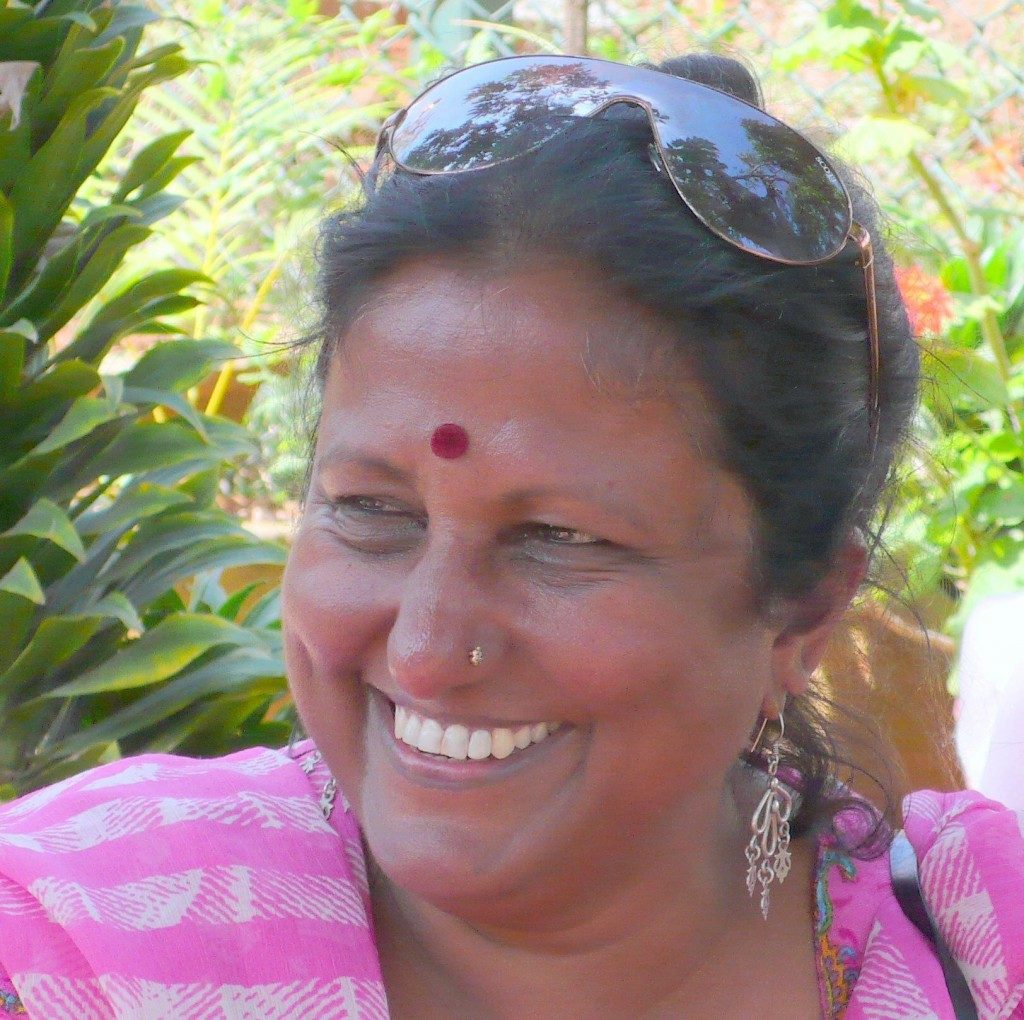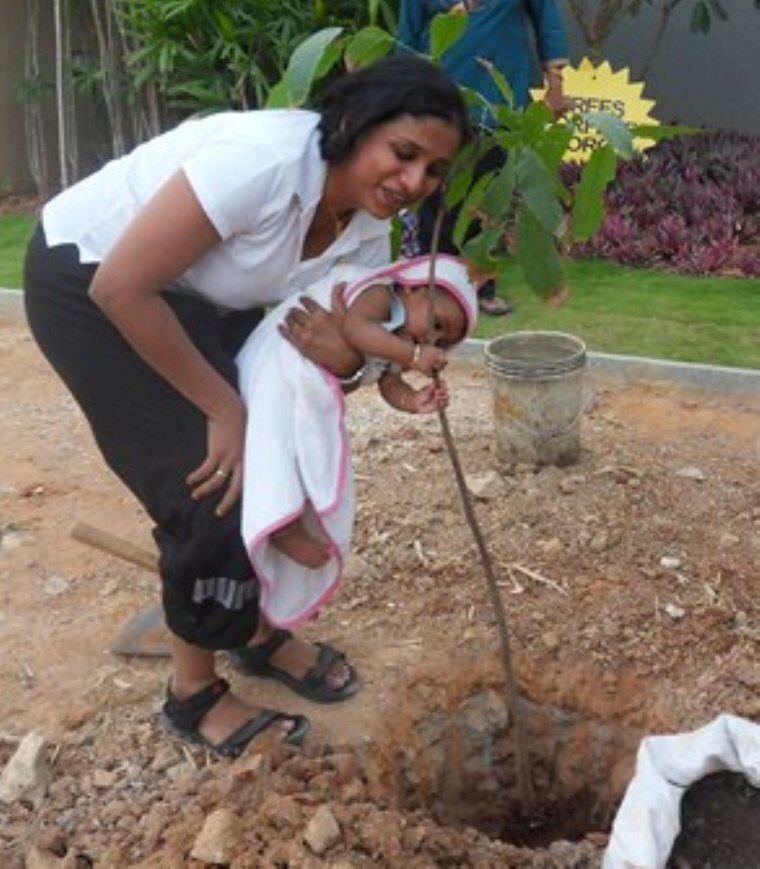
When you can’t stop the evil in people, you bring out the good instead. It was this very thought that drove Janet Yegneswaran, to start Trees For Free and become a green warrior.
In 2005, Janet Yegneswaran started Trees For Free in memory of her husband Rajanet Yegneswaran. What began as a planting of 250 trees in the first year has since grown to become a larger movement involving many neighbourhoods and people who care about their city. Janet and her supporters across all strata of society have planted 43,000 trees in and around Bangalore.
I wanted to interview Janet simply because it was such a wonderfully romantic story – of a lady who keeps her love alive by painting the planet green, a little by little everyday!
How did Trees For Free come about? What pushed you to get started?
Janet Yegneswaran: Around the year 2005, development along with the massacre of our city was its highest. That was when trees were being cut down, pulled down, uprooted – I can say a large scale killing of trees was on. And there were a lot of well-intentioned people who wanted to stop that. There were dharnas, there were demonstrations and people hugging trees and making human chains around their favourite trees.
But I understood one thing, that no matter how much we want to stop and save our planet, the forces which were destroying it were more powerful and it was so much more positive to go ahead and plant new trees. I was a landscape artist and all I knew was to create; that motivated me and gave me some know-how on planting.
What I saw was that it was better to bring the good out in people than to stop the evil. So I went house-to-house, door-to-door, with a few friends and volunteers, asking people to plant and look after trees in front of their houses. There were mixed responses; mostly, people would readily agree to plant and adopt the tree, but then eventually, cars became more important and everyone started thinking of parking and it became difficult again.
There was also a system of citizens volunteering as tree-guards, which was very effective then; a lot of fines and stay orders happened, which also gave rise to bitterness between neighbours, but I still feel that fines were a very good way to stop unnecessary cutting.
Tell us about your husband, in whose memory you started this initiative.
Janet Yegneswaran: He was a Limca records holder for acquiring the highest number of university approved, masters degrees. He had 30 masters degrees, 3 bachelor degrees, 14 diplomas and 6 memberships. The subjects of his degrees were varied, from Gandhian thought to Gerontology, from Archaeology to Defense studies. He firmly believed that only education could eliminate poverty.
How many trees has Trees For Free planted? Where do you organise such planting?
Janet Yegneswaran: Planting is not a numbers game for me. But till today we must have planted 43,000 trees in and around Bangalore. In the beginning we literally planted only 250 trees in the whole year, but then the work started getting appreciated, and thanks to the media, now people come to me. We have planted on road sides, parks, office campuses, schools, actually anywhere where there is a person most passionately willing to look after the tree once it is planted.
Yes, that’s important isn’t it? How do you ensure the planted trees survive?
Janet Yegneswaran: The most important factor I look for when we plant is, there have to be people of that area who want those trees and want greenery to exist and are willing to nurture those plants and give them regular water. Unless we don’t engage people, it is difficult to sustain a plant. You just don’t do a fancy sapling plantation and forget about it – saplings need nourishment. Of course, road side varieties are tougher, but for a sapling to grow it needs care.

I believe in people and engaging them. Initially, I did the running around, but today there is a lot of awareness and people come forward in the form of Corporate Social Responsibility (CSR) initiatives and building societies and associations. They come to me with requests for planting trees in various locations. So all we have to do is go to the location and plant saplings. When we plant on the road side we provide bamboo guards to the saplings and see to it that there are no electric wires obstructing the tree. If there are, we plant a smaller tree.
Events like a green marriage, a green ceremony, a green day have become popular, but I say don’t just do it to create a show. No one realizes that a seed takes at least 45 days to become a sapling, and a bigger tree’s seed will take 4 to 5 months to grow into a small sapling. A lot of work goes into making a small bag of possibility called the sapling. You give it to someone who just came for the party and is least bothered about your green vision – it’s just a waste of the poor life. So I have stopped distributing saplings. I encourage people who are willing to take care of the small plant and see to it that it grows into a lush big tree.
How can our readers (most of them, women) help?
Janet Yegneswaran: As women we have a role to play, a very important one – as nurturing souls, we ought to nurture the gardener in us too.
There are 101 excuses not to plant a tree or for not having them around, but just one reason – to make the planet better – is a good enough reason for women to join hands and be the driving force for greenery. You can inculcate a sense of green responsibility by having small balcony gardens, by growing a few vegetables on your roof tops, showing by example that trees and plants are oxygen for life.
The irony today is that there will be more people objecting to a tree being planted for various reasons, but plant a tree and everyone wants to park under it, or stand under it for some shade. Everyone wants a slice of its beauty.
Even if it is one tree we must all plant and grow something; it transforms you. Women can guide people like they have always done – shown the way. They can be change makers. I always say these days, that when the evil in people comes out, only the women can bring about transformation.
Article Credit: Women Web
